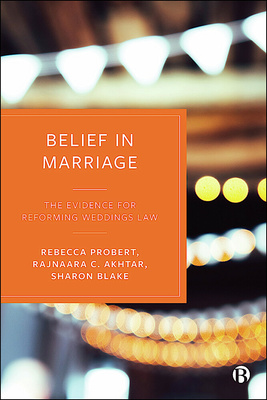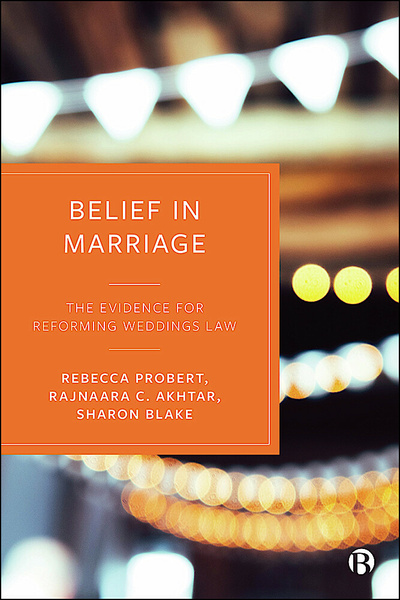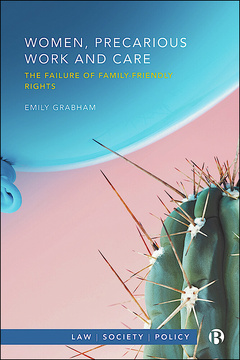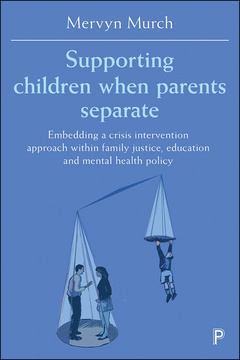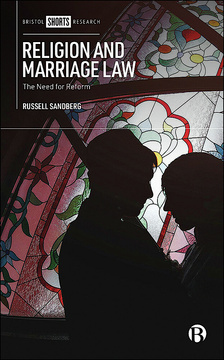Belief in Marriage
The Evidence for Reforming Weddings Law
By Rebecca Probert, Rajnaara Akhtar and Sharon Blake
Published
Apr 28, 2023Page count
148 pagesISBN
978-1529230475Dimensions
234 x 156 mmImprint
Bristol University PressPublished
Apr 28, 2023Page count
148 pagesISBN
978-1529230499Dimensions
234 x 156 mmImprint
Bristol University PressEPDF and EPUB available Open Access under CC-BY-NC-ND licence.
In principle, couples getting married in England and Wales can choose to do so in a way that reflects their beliefs. In practice, the possibility of doing so varies considerably depending on the religious or non-religious beliefs they hold.
To demonstrate this divergence, this book draws on the accounts of 170 individuals who had, or led, a wedding ceremony outside the legal framework. The authors examine what these ceremonies can tell us about how couples want to marry, and what aspects of the current law preclude them from doing so.
This new evidence shows how the current law does not reflect social understandings of what makes a wedding meaningful. As recommended by the Law Commission, reform is urgently needed.
“An illuminating account of the difficulties that the present law can create for people seeking a marriage ceremony that reflects their beliefs and practices.” Anthony Bradney, Keele University
Rebecca Probert, FBA, FAcSS, is Professor of Law at the University of Exeter.
Rajnaara Akhtar is Assistant Professor of Law at the University of Warwick.
Sharon Blake is Honorary Research Associate at the University of Exeter Medical School.
1. Introduction
2. Anglican, Quaker, and Jewish Weddings
3. Christian Weddings in Registered Places of Worship
4. Muslim, Hindu, Sikh, and Buddhist Weddings in Registered Places of Worship
5. Choices and Constraints Where Couples Do Not Share Religious Beliefs
6. Paganism and the Desire To Be Married Outdoors
7. Belief in Humanist Ceremonies
8. Personalisation and Belief: The Role of the Independent Celebrant
9. Ceremonies Led by Friends and Family
10. Conclusion







